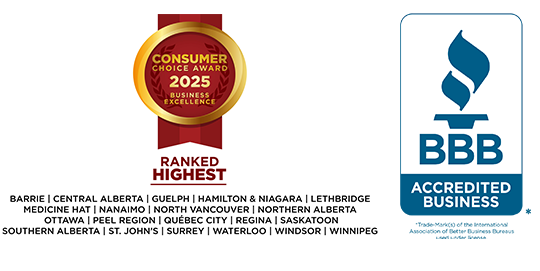After a lifetime of hard work, seniors should now be at a stage in their lives where they can slowdown, retire and enjoy their golden years. Unfortunately for many seniors, this is not the case. Insufficient income from government pension plans and savings, combined the high cost of living, health issues, relationship breakdown and often providing financial assistance to adult children are some of the main reasons seniors find themselves in debt in their retirement years. As a result, Licensed Insolvency Trustees (“Trustees”) are seeing a greater number of individuals in their retirement years looking to understand the options available to them under the Bankruptcy and Insolvency Act (“BIA”).
The primary purpose of the BIA is to allow an honest but unfortunate debtor to obtain a release from their debts and make a fresh start. Under the BIA, an individual debtor may be able to file an assignment in bankruptcy or a Consumer Proposal in order to obtain a release from their debts and start fresh again. But to many seniors, the thought of filing a bankruptcy, often after many years of successfully managing their finances and maintaining a good credit history, is devastating. On the other hand, many seniors are also at a stage in their lives where they will not require the use of credit going forward, such as for obtaining a mortgage or credit cards and are in a good position to use a proceeding under the BIA to get out of debt.
Usually the two most significant factors for seniors when considering filing a bankruptcy or a Consumer Proposal are:
- What assets owned by the debtor; and
- If there is any excess cash available once all monthly expenses have been paid.
If the debtor owns assets that would be realizable in a bankruptcy (such as equity in real property), they may be able to sell that asset in order to pay off their debts and avoid a filing under the BIA. However, if they have no realizable assets and most don’t as they have already exhausted all of their sources of cash by the time they meet with a Trustee, then a filing under the BIA may be their only option for dealing with their debt.
When choosing between filing a bankruptcy or Consumer Proposal, a Consumer Proposal will usually require there to be an excess of cash once all monthly expenses have been paid. If the individual’s income barely covers their monthly expenses, as is often the case with seniors living on a fixed income, there may be no alternative but to file an assignment in bankruptcy to deal with their debt.
Trustees are also seeing more seniors with income tax debt owing to the Canada Revenue Agency (“CRA”). This often happens in circumstances where the individual has elected for income taxes not to be taken off of their pension payments. This means that come tax filing time they will owe taxes. After one or two years of non-payment, the seemingly small amount of taxes owing can become an insurmountable debt. We also see this in circumstances where an individual is not earning enough income from pensions or savings and chooses to supplement their income by working on a self-employed basis after retirement, but do not deduct taxes at source.
The accrual of income tax debt can result in garnishments being placed on an individual’s pension payments, other income sources and bank accounts by the CRA. A garnishment almost always has the effect of further exacerbating an already difficult financial situation. Filing an assignment in bankruptcy or a Consumer Proposal will put in place a stay of proceedings which will allow the garnishment to be lifted and ordinary payments to resume. Going forward, the individual can request the government take taxes off of their pension payments in order to avoid future tax liability.
In circumstances where an individual has little or no realizable assets and no excess income to be able to afford to pay the fee to file a bankruptcy, the Office of the Superintendent of Bankruptcy (“OSB”) offers the Bankruptcy Assistance Program (“BAP”). This program is available to any individual that cannot afford to pay the regular Trustee’s fee. The BAP process works as follows:
- The OSB keeps a list of Trustees who participate in the BAP by offering their services at a reduced rate. Contact the Office of the OSB to request a BAP registration form and a list of Licensed Insolvency Trustees participating in the BAP in your locality.
- Once you receive the BAP registration form, contact two Trustees from the list and schedule an initial consultation meeting with each for an assessment and to obtain the Trustee’s signature attesting to your inability to pay the Trustee’s regular fees.
- Submit the completed BAP registration form to the OSB. The OSB will review the information and if warranted, designate a Trustee to administer your bankruptcy estate.
Taking the initiative to deal with a difficult financial situation is often the hardest part of the process for an individual, especially when they are finding themselves in financial difficulty at a later stage in their lives. A Trustee is in the best position to discuss their financial situation and to review the options available, whether it is to make use of a proceeding under the BIA or another option that would avoid the use of a formal proceeding.



